25+ SAMPLE Personal Training Agreement
-
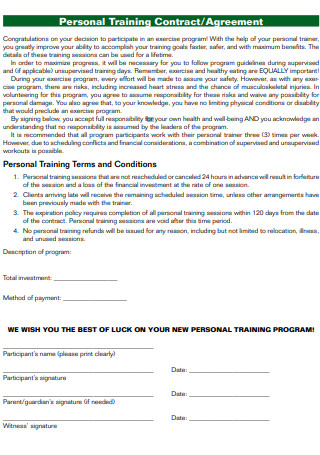
Personal Training Contract Agreement
download now -

Personal Training Client Agreement
download now -
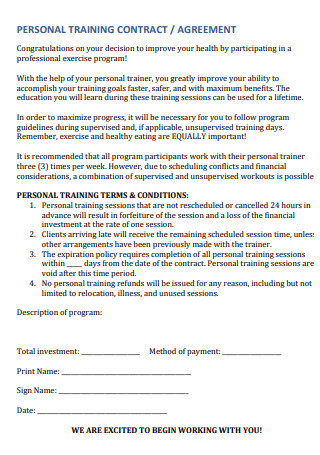
Sample Personal Training Contract Agreement
download now -

Certified Personal Training Agreement
download now -
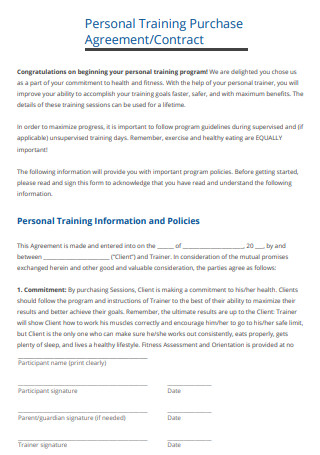
Personal Training Purchase Agreement
download now -
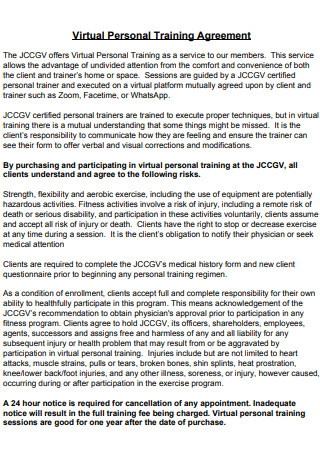
Virtual Personal Training Agreement
download now -
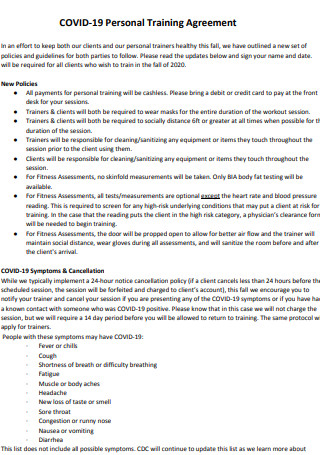
Covid 19 Personal Training Agreement
download now -
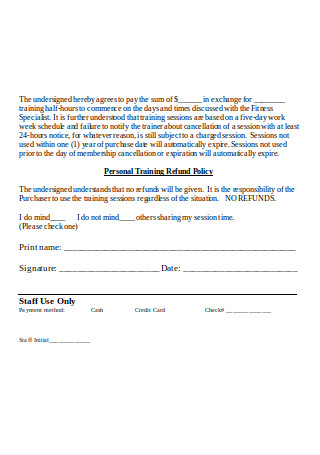
Personal Training Service Agreement
download now -
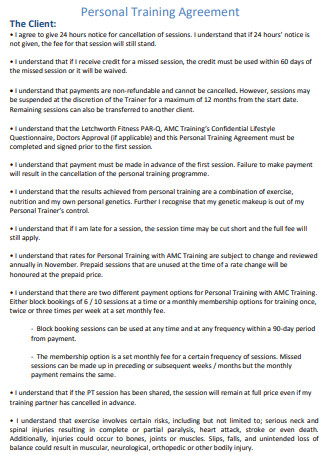
Free Personal Training Agreement
download now -

Club Personal Training Agreement
download now -
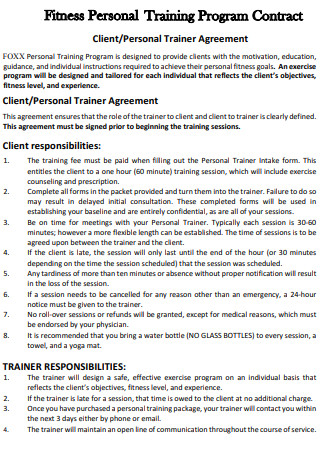
Fitness Personal Training Agreement
download now -
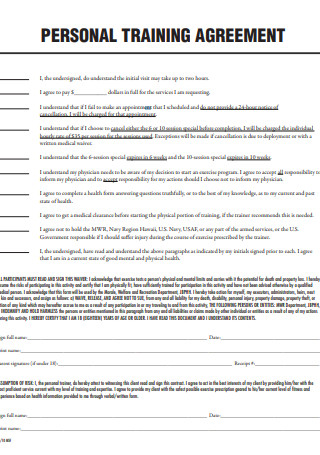
Personal Training Agreement Example
download now -

Personal Training Use Agreement
download now -
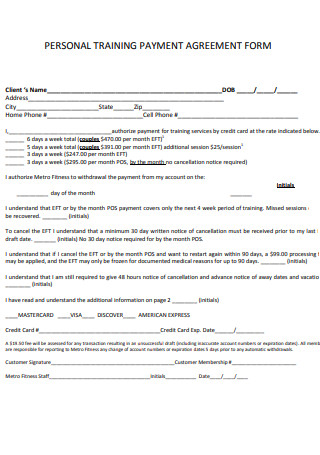
Personal Training Payment Agreement Form
download now -
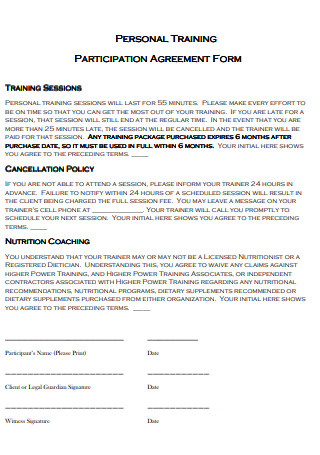
Personal Training Participation Agreement Form
download now -
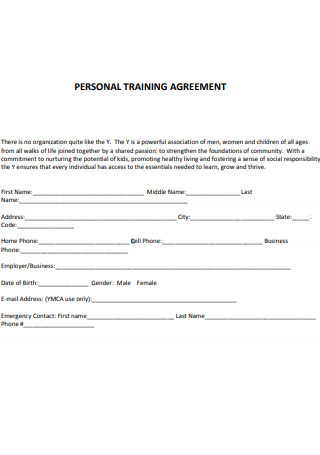
Youth Personal Training Agreement
download now -
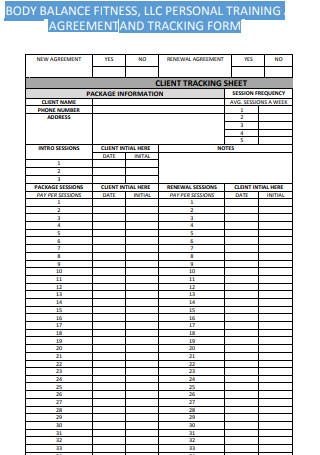
Personal Training Agreement and Tracking Form
download now -
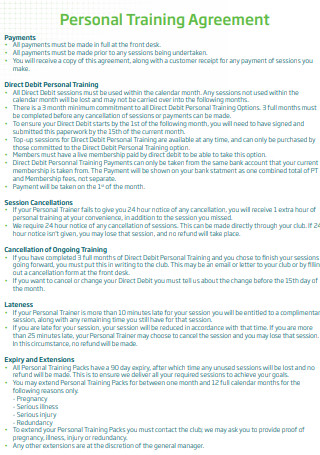
Personal Training Agreement Template
download now -
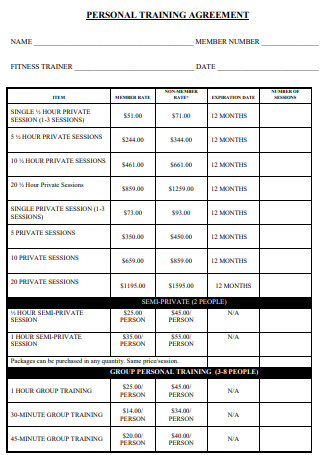
Personal Training Agreement Update
download now -
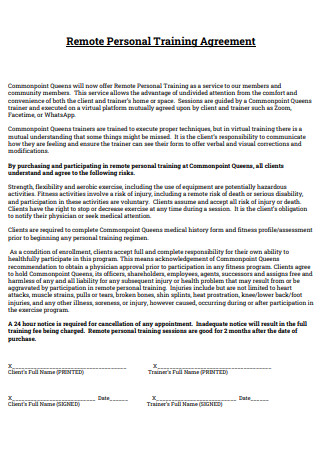
Remote Personal Training Agreement
download now -
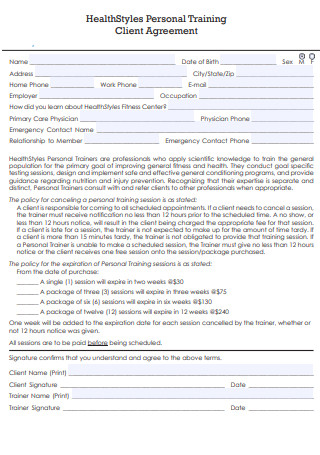
Hairstyle Personal Training Client Agreement
download now -
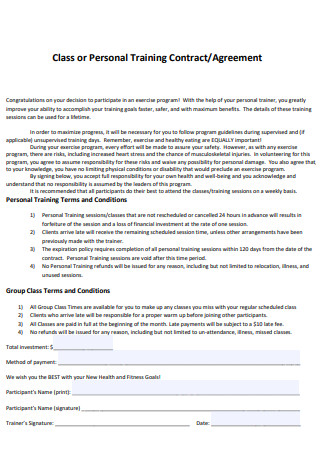
Personal Training Class Agreement
download now -
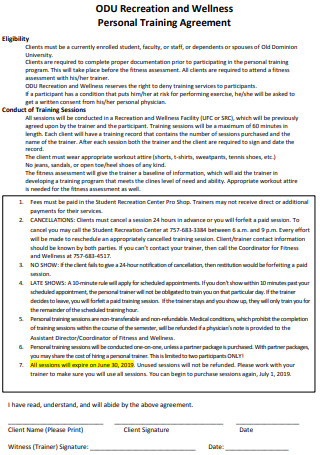
Recreation and Wellness Personal Training Agreement
download now -
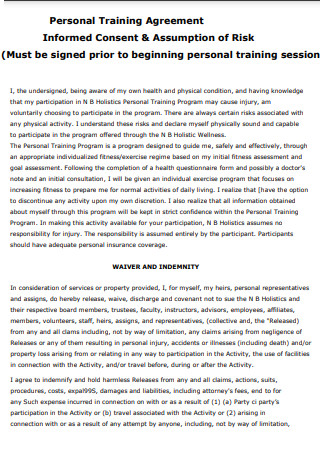
Personal Training Agreement Informed Consent
download now -
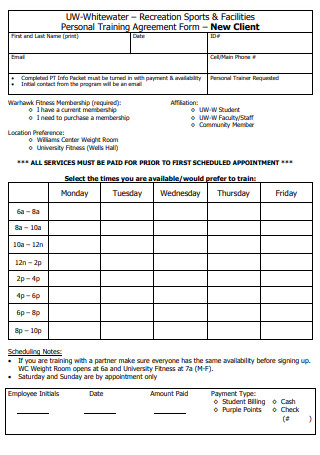
Recreation Sports Facilities Personal Training Agreement Form
download now -
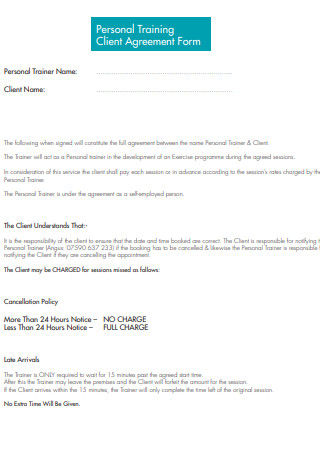
Personal Training Client Agreement Form
download now
FREE Personal Training Agreement s to Download
25+ SAMPLE Personal Training Agreement
What Is a Personal Training Agreement?
Benefits of Personal Trainers
Tips for Becoming a Successful Personal Trainer
How to Find a Personal Trainer
FAQs
What is the purpose of a client personal trainer agreement?
How do I get out of a personal training contract?
What is a fitness contract?
What Is a Personal Training Agreement?
A Personal Training Agreement is an agreement between a trainer and their customer that outlines the arrangement’s essential terms. Essentially, it will cover any potential legal problems that may develop in the future. For instance, what will occur if the trainer can no longer deliver services? Will the client have the option to terminate the contract? If so, what are the grounds? It will guarantee that all parties are aware of their respective duties and responsibilities. It should also be the first item you refer to in the event of a misunderstanding or disagreement. Therefore you should strive to make the terms as transparent as possible. According to statistics, 36.7 percent of all personal trainers are female, while 63.3 percent are male. The average age of a personal trainer in the workforce is 37 years old.
Benefits of Personal Trainers
There are numerous reasons why a personal trainer is crucial to reaching your fitness objectives, whether they are connected to weight loss, sports, or athleticism. Here, we’ve outlined the most important reasons you should hire a personal trainer and the rewards you anticipate.
Tips for Becoming a Successful Personal Trainer
To be a successful personal trainer, you need to do more than get certifications and show you can do the job. It’s a daily practice to train people in a way that makes your clients want more of you and to keep building and keeping a loyal client base. This could mean developing a way to train people to see the results and advantages of working with you and feel like they have to work with you. Here are some tips that will help you do well as a personal trainer:
1. Listen to your clients
As a personal trainer, you must listen to your clients to ensure that everything you do centers around their desires. Please work with your clients to assist them in defining their desired outcomes. Inquire about why they chose a personal trainer and their exercise preferences. Utilize this information to tailor a plan just for them. You must also listen to your customers to learn about their workout history and any injuries or health problems you should be mindful of. Be cautious of any personal information your client discloses with you, and consider any restrictions they create. When you listen to your clients, they may feel more valued and respected.
2. Acquire a wealth of experience
Extensive experience can better prepare you for a career as a successful trainer. Spend a great deal of time in the gym learning to use various equipment and perform different exercises. Observe other trainers learn more about their methods, and consider working with a trainer so you can experience what it’s like to be a client rather than a trainer. Discuss any concerns you may have with other trainers and solicit their advice or best recommendations.
3. Learn how to be a coach
As a personal trainer, you must establish a rapport with your client and help them through the progressive physical transformations they are experiencing. This requires you to learn how to encourage and motivate your clients effectively and be a coach. As a coach, you must understand the psychology behind your actions and words and how each client responds.
4. Train the client based on what works for them
You must realize that your client’s wants and tastes differ from your own. Choose equipment and activities that work for them specifically, and consider their preferences when designing their routines. For instance, if a customer dislikes running as a cardio workout, you could suggest that they attend a fitness-based dance class. Additionally, it is essential to consider your client’s relationship with technology. Some clients may wish to track their development using smart watches or other gadgets. Consider how you may include the goals prompted by these devices in the objectives you set for the client.
5. Use intensely wisely
As a trainer, it is essential to remember that discomfort, illness, or injury following an exercise does not indicate a successful workout. Customizing workout plans for each customer is vital because the intensity of workouts varies for each individual. While it is essential to challenge your customers, you should also design tailored exercises that increase their confidence. Utilize a mix of activities with low, medium, and high intensities during your sessions.
How to Find a Personal Trainer
A good personal trainer can make a huge difference in how fast you get better at the gym. Their main goal is to help you bypass the mistakes many people make when trying to figure out fitness independently. They also keep you safe while you enjoy your new, sometimes beautiful but always painful, way to get ahead. On the other hand, personal training is still a relatively new job in the mainstream. It can be hard to know what to look for in an excellent personal trainer because the fitness world has changed significantly in the past few years. It can be hard to tell with all the new services, ways of delivering them, qualifications, equipment, social media, and costs. Here are steps to consider before hiring a personal trainer to get you on the right track.
Step 1: Experience
Personal training is a broad word that encompasses most (if not all) training objectives. Depending on what you seek in a trainer, their experience in the subject may automatically eliminate them from consideration. Whether they are young and inexperienced or lack understanding in the areas of knowledge they seek, not every trainer possesses the same capabilities. Consequently, there may be young or inexperienced trainers that provide you with exceptional service. The age of a trainer is not necessarily indicative of their ability. Check the trainer’s experience with past clients and their aims to ensure they correspond with your own.
Step 2: History of Ongoing Instruction
Continued education is a highly complex topic. As the fitness industry grows and starts to include more and more types of training, so have certifications. When a trainer goes after more credentials, it shows that they value knowledge and are willing to spend money to enhance their skills so they can help you better. With more areas of expertise, there is also a chance that the quality of certifications or how well they meet your needs will go down. Find trainers always looking for high-value, reputable certifications that match your interests. Things to examine for in a personal trainers are upgrades to their basic credentials and a desire to get the best education in their field.
Step 3: Personal Knowledge Regarding Exercise
Personal training is a unique profession that combines paper certifications with on-the-floor or athletic experience to determine a trainer’s actual value. While physical attractiveness and athletic performance are not necessarily associated with a trainer’s ability to help you achieve your goals, they may say volumes about their ability to assist you through a similar process. A trainer with extensive experience in powerlifting may be better suited to improve your strength, and a trainer who has run marathons may be better suited to improve your cardiovascular performance. The most excellent personal trainers combine their education with hands-on experience to help you achieve your goals.
Step 4: Years in the Industry
Years in the profession are less indicative of a potential personal trainer’s level of expertise and more indicative of their dedication to fitness. The unfortunate truth about many jobs, especially ones such as personal training, is that many newcomers do not fully comprehend the nature of their work. Many trainers in professional training have a minimal lifespan, which can severely affect you if you’re seeking a long-term commitment. A trainer with substantial years of experience ensures they will not disappear in the middle of the encounter.
Step 5: Communication Style
You can learn from and respond to feedback in particular ways. How you receive contact from a personal trainer, such as through emails, phone conversations, training manuals, programs, or in-person coaching, can significantly impact your progress—finding a personal trainer whose communication style complements your own. It is an important detail to learn as soon as possible. Cues are a challenging aspect of the game, and acquiring a physical skill can be time-consuming.
Step 6: Professionalism
Professionalism is a constant struggle in the field of personal training. Technology such as cell phones is a valuable tool, but it can make you question whether or not your trainer is genuinely paying attention to you. Punctuality, well-written messages, and a professional appearance are all possible markers of habits that may extend to the services you are paying for. It is advisable to see how a potential trainer carries these traits.
Step 7: Adaptability
A gym during peak hours is utter mayhem. You may have the best-written plan and be fully prepared for your workout, but what can you do if every piece of equipment you had planned to use is unavailable? A competent personal trainer can modify the plan on the fly to accommodate the intent of the original workouts and to accommodate what is now available. Additionally, adaptability extends to training programs. The ideal thing for you and your trainer is to establish a steady plan, but life occasionally interferes. Being somewhat flexible with your schedule is a significant asset to receiving the best value for your money.
FAQs
What is the purpose of a client personal trainer agreement?
Your training contract also safeguards your clients. Clients may be uncertain about payment, session, and missed appointment expectations without it. The more a client comprehends what to anticipate, the stronger your professional relationship will be.
How do I get out of a personal training contract?
Many gyms ask members to provide a notarized cancellation letter to end a contract. This is an official letter signed by a notary public. Include your name, address, email address, and number in the letter. You must also include your gym membership number.
What is a fitness contract?
Contracts for gym memberships are legally enforceable documents that outline the conditions of an agreement between the gym and its members. Your customers must sign a contract when signing up for memberships or fitness courses.
Agreements are essential legal contracts regardless of their form or purpose. This will be for the use of paperwork, and one should read every agreement’s terms with great attention before signing it to avoid future issues. With this, we provide you with the advice above and the handy templates from which you may choose. Enjoy!
